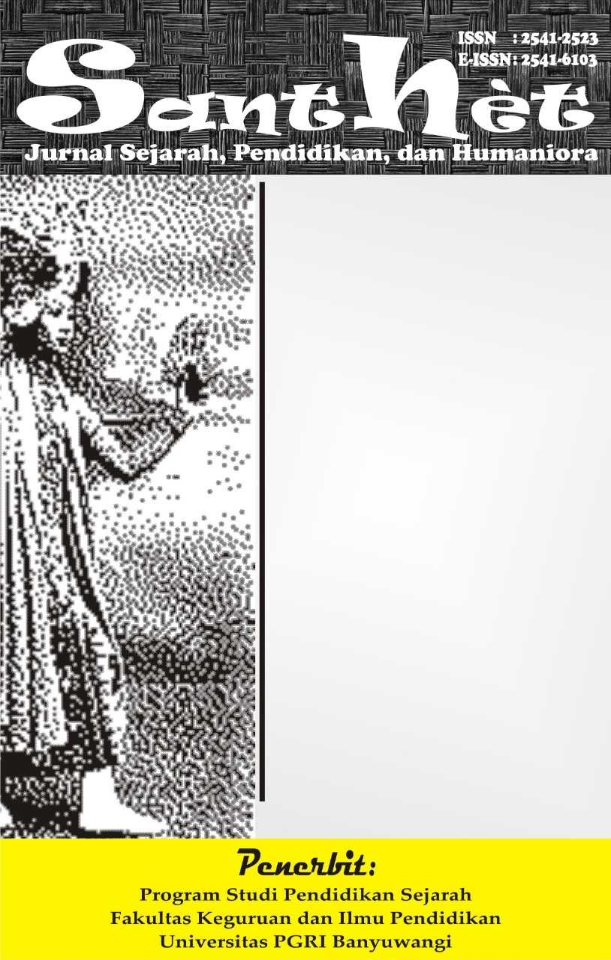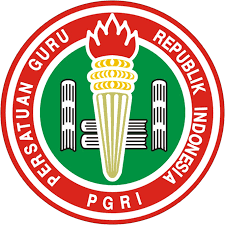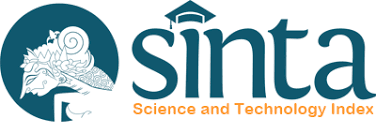THE EVOLUTION OF PAO AN TUI AND ITS ROLE AFTER THE ANTI-CHINESE RACIAL RIOTS IN TANGERANG (1946-1949)
Perkembangan Pao An Tui dan Perannya pasca-Kerusuhan Rasial Anti-Tionghoa di Tangerang (1946-1949)
DOI:
https://doi.org/10.36526/santhet.v9i5.5825Keywords:
chinese, racial riots, social movement, evolutionAbstract
This research aims to analyze the role of the security forces formed for the Chinese community affected by the anti-Chinese racial riots that occurred in Tangerang in 1946. Using historical research methods that are consist of heuristic, source criticism, interpretation, and historiography, the data used in this research was obtained through analysis of written documents, newspapers, and secondary literature relevant to the research of the evolution of a Chinese security force who is the origins of which can be seen from the anti-Chinese racial riots that happened a year before the forces was officially formed. The findings of this research reveal that the formation of a security force for the Chinese community cannot be separated from the threat in the form of social movements carried out by militia troops due to economic factors. The novelty of this research lies in the analysis of the role of the Pao An Tui Chinese community security group in the anti-Chinese racial riots that occurred in Tangerang in 1946, as well as the evolution of the organization after it was officially formed a year after the riots occurred.
References
AS deel I. (1948).”Verhoek van den heer Kan om steunverlening aan Pao An Tui”
Chung Hua Tsung Hui. (1947). Memorandum Outlining Acts of Violence and Inhumanity Perpetrated by Indonesian Bands on Innocent Chinese Before and After the Dutch Police Action was Enforced on July 21, 1947. Chung Hua Tsung Hui Batavia.
Cribb, R. B. (1990). Gejolak Revolusi di Jakarta 1945-1949 Pergulatan Antara Otonomi dan Hegemoni. Grafiti.
Ekadjati, E. S. (2004). Sejarah Kabupaten Tangerang. Pemerintah Kabupaten Tangerang.
Eng, T. B. (1946). Surat Komite Tionghoa Pembantoe Keamanan Oemoem Djakarta, 6 Juni 1946.
Garraghan, G. J. (1946). A Guide to Historical Method. Fordham University Press.
Halim, W. (2011). Ziarah Budaya Kota Tangerang Menuju Masyarakat Berakhlakul Karimah.
Kahin, A. R. (1990). Pergolakan Daerah Pada Awal Kemerdekaan. Pustaka Utama Grafiti.
Korver, A. P. E. (1985). Sarekat Islam Gerakan Ratu Adil? Grafitipress.
Kuntowijoyo. (2013). Pengantar Ilmu Sejarah. Tiara Wacana.
Lapian, A. B., & Chaniago, J. R. (1988). Dibawah Pendudukan Jepang: Kenangan 40 Orang yang Mengalaminya. ANRI.
Lasjkar. (1946, June 21). Tiap orang Tionghoa hendaknja djadi Patriot Indonesia.
Lie, R. (2014). Social Revolution and the Massacre of Chinese in Tangerang, 1945-146. Universiteit Leiden.
Merdeka. (1946, June 22). Sekitar Pengoengsi Rajat Tionghoa.
Onghokham. (1991). Rakyat dan Negara. Pustaka Sinar Harapan.
Purcell, V. (1965). The Chinese in Southeast Asia (Second Edi).
Purwaningsih, S. M. (2000). Kerusuhan Anti-Cina: Tangerang 1913-1946. Universitas Indonesia.
Saleh, R. H. A. (1995). Akademi Militer Tangerang dan Peristiwa Lengkong. Yayasan Pustaka Utama.
Star Weekly. (1947, August 24). Sekiter Pao An Tui.
Sulardi. (2015). Pao An Tui 1947-1949. Masup Jakarta.
Sumarda, H. (1985). Tangerang 1945-46, Pemerintah dan Rakyat [University of Indonesia]. https://lib.ui.ac.id/detail?id=20157062&lokasi=lokal
Sin Po. (1946 , June 4). Warta dari “Chiu Chi Ku.”
Sin Po. (1946, June 5). Noraka Sapoeter Tangerang.
Sin Po. (1946, June 6). Fonds Tangerang.
Sin Po. (1946 , June 8). Warta dari “Chiu Chi Ku.”





























